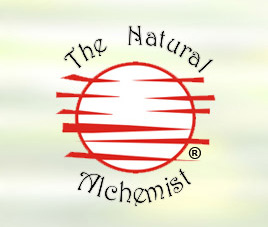The Natural Alchemist's® offers you a range of natural skin, body and haircare products as well as superb Essential Oils.
Ingredients
|
|
Aloe Vera -(aloe barbadensis leaf juice) Method of extraction - Steamed distilled Aloe contains over 200 beneficial phytonutrients! They include zinc, vitamin C and E which stimulate the skin giving the ability to heal and moisturise the skin and hair, it is also useful for minor skin irritations. It is antibacterial, anti-fungal, anti-allergy, anti-inflammatory and it enhances immunity. The lignins in aloe give it the ability to penetrate the skin's waterproof outer layers while carrying other dissolved substances along with it. Oils and other botanicals no longer sit on the outside of the skin surface going to waste, they're drawn right into the deeper layers. You'll notice when you apply our creams and lotions they absorb quickly and thoroughly. Important Note: The information provided is for educational purposes only.
|
|
 |
Apple Cider Vinegar - Acetic Acid - Certified Organic Method of extraction - Juicing & Fermentation There are many benifits associated with using Organic apple cider vinegar; It is an excellent treatment for both the hair and facial skin. As regards to the hair, it is cleansing, gives the hair more body & luster and reduces hair loss. It also reduces itching scalp & dandruff by destroying the bacteria or fungi that clog hair follicles. Vinegar has a tonic action that promotes blood circulation in the small capillaries that irrigate the skin. Apple cider vinegar regulates the pH of the skin, it is also most effective when used with lavender, rosemary, rose & elder flower. Important Note: The information provided is for educational purposes only.
|
|
 |
Apricot Kernel oil - Prunus armeniaca Method of extraction - Cold pressed Plant part - Kernel Country of Origin - UK Because apricot kernel is readily absorbed into the skin without leaving an oily residue behind,it is an excellent choice of carrier oil for all skin types. For skin nutrition, apricot kernel oil contains the essential fatty acids oleic & linoleic acid. Also high in vitamins A & E. Ready absorption also makes it a good choice of skin care oil for people with dry skin, while the gentleness of apricot oil makes mild enough to use on the elderly. Regular application of this oil or products containing it can keep skin smooth & flexible. Important Note: The information provided is for educational purposes only. |
|
 |
Bay Laurel - Laurus nobilis Method of extraction - Steamed distilled A greenish-yellow liquid with a powerful, spicy aroma. Bay laurel can be an interesting addition to hair care blends, said to be an excellent remedy for hair and scalp, stimulating growth and clearing dandruff. Emotionally, it is both uplifting and grounding, helps to clear mental confusion & clarify thought processes. As such, it might be an effective addition to a study blend. Important Note: The information provided is for educational purposes only.
|
|
 |
Bergamot - Citrus bergamia (Bergaptene free) Method of extraction - cold pressed Bergamot (pronounced Ber-ga-mo), has a more subtle citrus aroma than grapefruit or lemon and is best known as the flavour component of Earl Grey tea. Bergamot is encouraging & balancing to the spirit. Combats fatigue due to stress, tension and anxiety. Bergamot blends with most oils, it's hard to think of any it doesn't blend well with, my favourite is: Sandalwood, rose maroc and jasmine. Important Note: The information provided is for educational purposes only.
|
|
 |
Beeswax - Unrefined Method of extraction - Carefully without harming bees Unrefined bees wax is yellow with a rich honey aroma. We like to use this wax in our lip balms, giving a soft yellow colour with the delicious taste of honey. Essential oils infused into bees wax is also in our melts, which when melted gives any room a warm welcoming feel. Important Note: The information provided is for educational purposes only.
|
|
 |
Calendula - Calendula officinalis Method of extraction - C02 Calendula is a bushy, aromatic annual. The whole flower (heads & petals) are used for medicinal purposes. It is effective in the treatment for minor skin problems. Blended into carrier oils, lotions and creams giving a rich herbal feel. Calendula is also reported useful for sore nipples in nursing mothers. Important Note: The information provided is for educational purposes only.
|
|
 |
Carrot Tissue Oil - Daucus carota Method of extraction - cold pressed Carrot oil is extremely high in Betacarotine & vitamins A and E, It is believed to be very beneficial to hair and skin. Topical application of carrot oil is said by many skincare experts to promote formation of new cells & stimulate the production of sebum in dry, scaly skin and scalp. A few drops of this enriching extract brings soothing to chapped & irritated skin, fantastic for aged or weathered skin. Please be aware that this oil is like many of the other beta carotene rich extracts, is deep orange and will temporarily colour your skin. Important Note: The information provided is for educational purposes only.
|
|
 |
Castor Oil - Ricinus communis Method of extraction - cold pressed One of the major benefits of castor oil for hair is that it promotes hair growth and thickness, so very good for people with fine hair or those who are experiencing hair loss. The pure forms of castor oil have the most benefits, so try to avoid diluted forms with too many additives. It is recommended that castor oil be applied directly to the scalp, this is due to the consistency of castor oil which makes it difficult to remove from the hair itself. Castor oil is also used in some soaps, it acts as a humectant by attracting and retaining moisture to the skin. This moisturising quality makes castor oil well suited as an ingredient in soaps and skin care products. Important Note: The information provided is for educational purposes only.
|
|
 |
Castille Soap Country of Origin: USA (Unscented Baby Mild) - Castile soap is produced organically using a blend of organic coconut, organic oilve, organic hemp and organic jojoba oils along with water, citric acid & Vitamin e. This soap provides a clean, fluffy lather in both hard and soft water. We use castile soap in our hair shampoo as it does not leave an itchy, dry feeling that commonly happens with liquid shampoos that have strong chemical ingredients. Castile soap does not contain synthetic fragrances or detergents that can upset the balance of the environment when it enters the wastewater systems. Important Note: The information provided is for educational purposes only. |
|
 |
Atlas Cedarwood -Cedrus atlantica - Certified Organic Method of extraction: Steam distilled. A yellow, orange or deep amber viscous oil with a warm, camphoraceous top note and sweet tenacious, woody- balsamic undertone. This is the cedarwood your grandmother's cedar chest was crafted from, hang a bit in your closet to keep moths away from your wool clothes. emotionally cedarwood oilcan calm anxiety and help diffuse fear. The astringent effect of the oil of cedarwood is good to counteract oily skin and helps deal with some skin problems. It can be blended into skin creams or used as a tonning mist when blended with other essential oil and hydrosols, this can be helpful for men after shaving to calm the skin and reduce sensitivity. Important Note: The information provided is for educational purposes only. |
|
 |
Cetearyl Olivate, Sorbitan Olivate Method of extraction: ACO approved input in an organic product Cetearyl olivate and sorbitan olivate are processed from pure refined olive oil. Together they create a non-ionic, self-emulsifying system which is non-ethoxylated and PEG-free. They are hypoallergenic and approved for use in organic formulations. Their primary function is as an emulsifier for oil/water products and also ap a deep moisturising and softening effect beneficial to the skin and hair. Important Note: The information provided is for educational purposes only.
|
|
 |
Citric Acid Conventional (non-GMO) Origin: China Citric acid is a weak organic acid, and it is a natural preservative. Commonly made from corn syrup, also found in citrus fruit. Cirtic acid has hundreds of uses in the food industry, to add an acidic, or sour taste to foods. It is a background player in a lot of the things we use everyday and benifits us in good health from it amazing restorative powers for inner health, as a food preservation, water softening, added to wine to give a fuller flavor and a flavor enhancement for food and soft drinks. Important Note: The information provided is for educational purposes only.
|
|
|
Citrus Seed oil Important Note: The information provided is for educational purposes only.
|
||
|
|
Chamomile German (Extra Blue) Organic- Matricaria recutita Method of extraction: Steam Distilled Inky blue viscous liquid with a strong sweetish warm herbaceous odour. Chamomile German is considered one of the gentlest essential oils, beneficial for sensitive skin. Very effective in a carrier oil and applied to skin irritations, blend with lavender to help with sunburn symptoms. Important Note: The information provided is for educational purposes only. |
|
 |
Chamomile Roman - Anthemis nobilis Method of extraction: Steam Distilled Do not confuse the two; there are many differences between Roman & German chmomile the main one being colour (Pale blue liquid, turning yellow with time) & Roman is much milder than German chamomile. Roman chamomile is much sweeter smelling than German. It smells the way chamomile tea tastes (a warm sweet fruity) Roman Chamomile oil 3% in Organic Jojoba Oil is beneficial for sensitive or dry skin, great for children & infants. The elderly can also benifit from using this type of oil. Roman is better for relaxing and summoning sleep. Important Note: The information provided is for educational purposes only.
|
|
 |
Clary Sage -Salvia sclarea Method of extraction: Steam Distilled Clary sage, is a herb which grows up to a metre high with large hairy leaves, it produces small blue or pink flowers. The oil is extracted from these leaves and flowers by steam distillation. The oil is usually a pale yellow-green liquid with a distinctive earthy, herbaceous, and slightly floral note. It is most commonly used to increase mental alertness. However, it also nourishes tired skin and is perfect for hair care as it encourages growth. Important Note: The information provided is for educational purposes only.
|
|
 |
Clove Bud Oil - Eugenia caryophyllata -ACO certified organic Method of extraction: Steam distilled Clove bud has one valuable first aid benefit; clove oil numbs the nerves. It is a natural analgaesic and antiseptic used primarily in dentistry for its main ingredient eugenol. It is often used as a home remedy for dental pain relief, such as toothache. Clove is also a useful contribution to blends for oil burners and deffusers, it is stimulating to the mind and memory, also helps in cases of farigue. Note: Clove is definitely an essential oil to be used with caution and respect. clove is a known dermal and mucous membrane irritant and sensitizer, it should not be used on the skin, or if necessary only in very weak dilution (less than 1%) It should not be applied to broken skin. Avoid use of any clove if you are on anti-coagulant therapy (blood thinners). Important Note: The information provided is for educational purposes only.
|
|
 |
Coconut oil - Cocos nucifera Certified Organic Method of extraction: cold pressed Coconut oil is extracted by cold pressing the coconut. Clean, natural extra virgin, this oil is produced by the farmers themselves within one hour of opening the nut! Coconut oil is uniquely rich in lauric fatty acid > 48% which is a prime ingredient in mother's milk and helps build up the body's immune system. It is the best oil for a premium soap as it lathers well, cleans and nourishes the skin. this oil is beautiful to use in creams and lotions. Important Note: The information provided is for educational purposes only.
|
|
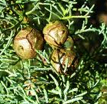 |
Cypress - Cupressus sempervirens Method of extraction: Steamed distilled A pale yellow to greenish –olive mobile liquid with a smoky, sweet, woody- balsamic scent. Important Note: The information provided is for educational purposes only. |
|
 |
Epsom Salts - Magnesium sulphate form: crystals Complies with United States Pharmacopoeia (USP). Detoxifying, combined with our essential oils gives soothing relief to tired foot and muscles. Use as foot or bath soak. Often used in floatation tanks as it softens water and makes the body more buoyant. Used as a water softener also makes this product useful in the laundry. Important Note: The information provided is for educational purposes only.
|
|
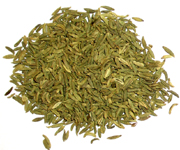 |
Fennel Sweet - Foeniculum vulgare - Certified Organic Method of extraction: Steam distilled A colourless to pale yellow liquid with a very sweet, anise-like, slightly earthy-peppery scent. Important Note: The information provided is for educational purposes only.
|
|
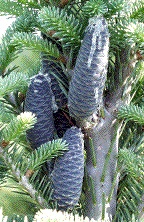 |
Fir Needle - Abies sp. Method of extraction: – steam distilled A colourless to pale yellow liquid of pleasant, rich, sweet- balsamic odour. Important Note: The information provided is for educational purposes only. |
|
 |
Frankincense - Boswellia carteri Method of extraction: – steam distilled Frankincense or olibanum is an aromatic resin obtained from boswellia trees by slashing the bark and allowing the exuded resin to bleed out and harden. These hardened resins are called tears. The dry resin is then steam distilled into an oil. Frankincense is used in perfumery and aromatherapy. Frankincense has a warm, sweet, rich resinous fragrance which produces a sense of calm. Important Note: The information provided is for educational purposes only. |
|
 |
Geranium - Pelargonium graveolens Method of extraction: Steam distilled The Bourbon oil is a greenish - olive liquid with a rosy- sweet, minty scent Important Note: The information provided is for educational purposes only. |
|
 |
Grapefruit Seed Extract - Vitis vinifera Method of extraction: Cold pressed Grapefruit seed extract is processed from grapefruit seeds and pulp obtained as a byproduct from grapefruit juice production. Grapefruit juice is used for high cholesterol, “hardening of the arteries (atherosclerosis) cancer, a skin disease called psoriasis and for weight loss and obesity. Grapefruit seed extract is taken by mouth for bacterial, viral, and fungal infections including yeast infection. Grapefruit oil is applied to the skin for muscle fatigue, hair growth, toning the skin, and for acne and oily skin. It is also used for the common cold & flu (influenza). Grapefruit seed extract is applied to the skin as a facial cleanser, first-aid treatment, remedy for mild skin irritations. Important Note: The information provided is for educational purposes only.
|
|
 |
Honey Important Note: The information provided is for educational purposes only. |
|
 |
Honeysuckle - Lonicera caprifolium Method of extraction: Solvent Benefits & Uses Of Honeysuckle Oil Honeysuckly is a middle note with a sweet, floral aroma. It's properties are aphrodisiac, euphoric, relaxing the mind, soothing and uplifting emotions. Honeysuckle oil is excellent in aromatherapy and is used to scent candles. It is a high-grade essential oil and known for its long-lasting fragrance and is alcohol-free. The oil provides a sweet and calming fragrance which is used as an additive to perfume body oils, skin lotions, soaps. Honeysuckle oil can be added to shampoos and conditioners to give hair a silky softness and eliminating dryness and brittleness. Adding a few drops of honeysuckle oil in the bath gives a feeling of happiness. Important Note: The information provided is for educational purposes only. |
|
 |
Hyssop - Hyssopus offinialis Method of extraction: Steam Distilled A colourless to pale yellow-greenish liquid with a sweet camphoraceous middle to top note and a warm spicy –herbaceous undertone. Blends well with: Bay, clary sage, geranium, grapefruit, lavender, lemon, mandarin, myrtle, orange, rosemary, sage. Properties: Antibacterial, antiseptic. Used to help relieve anxiety, mental fatigue, nervous tension, and stress- related disorders, and to aid clarity, concentration, and creativity, and for meditation, use 2-3 drops in a diffuser. Avoid in epilepsy, and while pregnant, Do not use if diagnosed with epilepsy or high blood pressure. Not for internal use. Important Note: The information provided is for educational purposes only.
|
|
|
|
Jasmine - Jasminum officinale Method of extraction: Solvent Jasmine is a very famous flower. It has a strong yet sweet, pleasing and romantic fragrance, which is very common in flowers which bloom only at night. The jasmine flower is often associated with romance and love. However, this flower has much more to offer than its sweet smell and romantic associations. The health benefits of Jasmine Essential Oil can be attributed to its properties as an antidepressant: the aroma of jasmine essential oil has a pleasing and uplifting effect on the mind and actively fights depression. Antiseptic: It is also a very good antiseptic and disinfectant. Aphrodisiac: It is actually the aphrodisiac property of Jasmine Essential Oil that makes you feel romantic or in love. Cicatrisant: Are you worried about the scar marks and after spots left by boils, acne, or other wounds? You should definitely try Jasmine Essential Oil. Since it is a cicatrisant, it can help fade those scar marks and after spots. Expectorant: the expectorant property of Jasmine Essential Oil can help you have an undisturbed night of sleep, even when you are suffering from a cough or cold. Emmenagogue: this property is meant to give relief to those women who suffer from irregular, obstructed, or painful menses or an untimely menopause. Galactogogue: Jasmine essential oil increases milk secretion from the breasts and is therefore very good for lactating mothers and their new babies. Parturient: The essential oil of Jasmine facilitates and eases the birthing process and reduces labor pains. Sedative: Jasmine essential oil calms down the body, mind and soul while bringing forth positive and constructive emotions. Important Note: The information provided is for educational purposes only.
|
|
 |
Jojoba - Simmondsia chinensis Organic Method of extraction: cold pressed Jojoba (pronounced "ho-HO-bah") oil is actually composed of liquid wax esters rather than oil. The golden wax is cold pressed from the bean of the jojoba plant. The body's natural sebum also contains wax esters, which act as a natural moisturiser and environmental barrier for the skin. Wax ester production steadily decreases with age, emphasising wrinkles and dry skin conditions such as eczema and psoriasis. Jojoba oil is an ideal ester replacement and dry skin treatment. Important Note: The information provided is for educational purposes only.
|
|
 |
Juniperberry - Juniperus communis Method of extraction: steamed distilled A water-white to pale yellow mobile liquid with a sweet, fresh, woody-balsamic odour. Blends with: Cypress, clary sage, lavender, vetiver, cedarwood, sandalwood, pine, fir needle, rosemary, geranium and other citrus oils. Benefits & Useful for restless sleep, rheumatoid arthritis, stress, cramps, other skin issues such as acne and infections. useful for childhood fears, plus many more. For stress - Place 1-2 drops of juniper berry essential oil and 1 drop of carrier oil (almond) in the palm of your hand, rub your hands together and inhale for up to 30 seconds or more several times a day or in times of stress and tension. Also consider diffusing in the workspace or home throughout the day. Avoid if pregnant. Do not use if diagnosed with kidney problems. Important Note: The information provided is for educational purposes only.
|
|
 |
Lavender High Alpine - Lavendula angustifolium Method of extraction:Steam distilled Blends well with: Bergamot, Clove, Rosemary, Eucalyptus, Patchouli, Clary sage , Rose and Jasmine essential oil. Lavender oil is used as an antiseptic, to soothe minor cuts and burns, to calm and relax, and to soothe headaches and migraines. Lavender essential oil will help take the sting out of the bite, help to stop it from becoming infected, and work to help it heal faster. Lavender is one of the few essential oils that may be used on the skin neat and no home should be without a bottle! Avoid in the first trimester of pregnancy. Important Note: The information provided is for educational purposes only.
|
|
 |
Lemon -Citrus limonum Organic
Method of extraction: Cold Pressed Blends well with; lavender, neroli, grapefruit, rose, sandalwood, geranium, eucalyptus, orange, rosemary. A pale greeny-yellow liquid (turning brown with age) with a light, fresh, citrus scent. Lemon essential oil is extracted by cold pressing the rind of the lemon fruit. The pleasant citrus aroma can enhance one's mood and aid relaxation. Medical Properties - Physical stimulant, skin freshener, mental focus, cleanser. Familiar essence of lemon conjures up cleanliness and freshness. Oil is obtained by expression from the outer part of the fresh peel. Very powerful natural stimulant makes it especially effective in the diffuser to reduce mental fatigue. Purifying qualities makes lemon a natural alternative to synthetic household cleaners, it effectively purifies stale air, sanities and freshens almost any atmosphere. Steam Facials Used to clean congested oily skin. CAUTION Phototoxic; avoid exposure to direct sunlight for 6 hours after use. Important Note: The information provided is for educational purposes only.
|
|
 |
Lemongrass - Cymbopogon citratus Method of extraction: Steam distilled Lemongrass essential oil is extracted from the tall perennial grass cymbopogan flexuosus by steam distillation. Also called Cochin Grass, Lemongrass is native to Cambodia, India, Sri Lanka, Burma,and Thailand. The main constituent of lemongrass oil is citral, which makes up around 80% of the total. Research also shows that lemon grass oil has antifungal properties, making it ideal for use in a soap. Important Note: The information provided is for educational purposes only.
|
|
 |
Lemon Scented Tea Tree Hydrosol (Leptospermum petersonii) ?? Method of extraction: Steam distilled A by-product of the essential oil steam distilation process. Hydrosols, also known as Floral Waters, are high in nutrients. They may be applied directly to the skin or face. Important Note: The information provided is for educational purposes only.
|
|
 |
Lime - Citrus aurantifolia Method of extraction: Steamed distilled A pale yellow or olive-green liquid with a fresh, sweet, citrus-peel odour. Line oil is a light consistency, with a note: (Top) Blends well with: Bergamot, Cedarwood, Geranium Bourbon, Grapefruit Pink and White, Lavender (all types), Lemon, Mandarin, Neroli, Nutmeg, Orange Sweet, Palmarosa, Petitgrain, Rose Absolutes, Rosemary (Both Varieties), Rosewood, Tangerine, Vetiver, Ylang-Ylang Common Uses: Lime essential oil has a crisp, refreshing citrus scent that has been used by aroma therapists for its uplifting and revitalising properties. It can also act as an astringent on skin where it is reputed to help clear oily skin. Cautions: Cold Pressed Lime essential oil is phototoxic. Users should avoid direct sunlight after application. Important Note: The information provided is for educational purposes only. |
|
 |
Lye (Sodium hydroxide) Properly made Lye soap is NOT harsh and can be amazingly gentle your skin. Since all "real" soap is made with lye, when properly formulated and allowed to cure, real soap is a gentle, mildly cleansing product. In a properly formulated recipe, a soapcrafter ensures that lye is the “limiting reagent.” When the lye is gone, the reaction is over. Some of us do this by “superfatting” our natural soaps. Additional oil is added to the formula to be absolutely sure that any trace of lye will be forced into reacting and creating soap. The unreacted oil remains in the soap as a conditioning agent. Soap Cannot Be Made Without Lye Important Note: The information provided is for educational purposes only.
|
|
 |
Mandarin - Citru reticulata organic Method of extraction:Cold Pressed A yellow-orange mobile liquid with a blue-violet hint, having an intensely sweet almost floral citrus scent. Mandarin essential oil, being citrus oil itself, blends with most of the other citrus oils such as those of neroli, grapefruit, orange, lime, and lemon. Along with these, it also blends well with essential oils of bergamot, cinnamon, clary sage, clove, frankincense, lavender and nutmeg. Topical application, massage, compress, bath, skin care, inhalation, diffuser, oil vaporiser or oil burner. This essential oil relieves stress, maintains moisture balance in the skin, used in cosmetics as a toner and cures skin disorders, helps with congested and oily skin, while also diminishing scars, stretch marks, and fat cracks on skin. NOTE: non-toxic, non-irritant, non-sensitising, possibly phototoxic, although it has not been demonstrated decisively. External use only, do not swallow. Important Note: The information provided is for educational purposes only.
|
|
 |
Myrrh - Commiphora myrrha Method of extraction: Steam Distilled The resinoid is a dark reddish-brown viscous mass, with a warm, rich, spicy-balsamic odour. The essential oil is a pale yellow to amber oily liquid with a warm, sweet-balsamic, slightly spicy-medicinal odour. Myrrh comes from an Arabic word "murr" meaning "bitter". Properties: Antioxidant, anti-inflammatory, anti-infectious, antiviral, anti-parasitic, antiseptic, astringent and tonic. Uses and Benefits: The benefits of Myrrh include the spiritual and emotional as well. Myrrh is a very spiritual oil and has been used in religious ceremonies and rituals for over 5000 years! Useful for Bronchitis, diabetes, viral hepatitis, fungal infections (Candida, eczema, ringworm, athletes foot, vaginal thrush), tooth and gum conditions, skin conditions (wrinkles, stretch marks, chapped, cracked) and ulcers. The warm and woody aromatic affect on the mind is uplifting. Myrrh releases fears, difficult or painful experiences as it relates to us or the world. It asks us to be more accepting, trusting and non-judgmental of ourselves. Because this oil opens the heart chakra and is uplifting to the mind, it can relieve anxiety, stress and depression. Place on the heart to release this patterning and embrace relationships (self and others). Myrrh Promotes opening of the solar plexus and heart chakras. The corresponding Chakra Colours are red and pink. NOTE:It is recommended to use this oil with caution during pregnancy or children under 6 years of age. Important Note: The information provided is for educational purposes only.
|
|
 |
Neroli - organic (hydrosol) Important Note: The information provided is for educational purposes only. |
|
 |
Olive Oil - Extra Virgin Olea europaea Organic Method of extraction: cold-pressed Olive oil is a vegetable oil obtained from cold-pressing the olive. Olive oil is composed mainly of oleic and palmitic acids and other fatty acids, along with traces of squalene and sterols. It is a powerful anti-oxidant. Traditionally, olive oil is used to relieve the effects of stings and burns or as a valuable lubricant for skin, particularly for babies. Important Note: The information provided is for educational purposes only.
|
|
 |
Orange Sweet - Citrus sinensis Method of extraction: cold-pressed Orange oil is an essential oil extracted by cold pressing the rind of an orange fruit. It is composed of mostly (greater than 90%) d-limonene which is what gives citrus fruits their aroma. Orange oil is uplifting and can be used to relieve stress. Important Note: The information provided is for educational purposes only.
|
|
 |
Palm oil - Elaeis guineensis Important Note: The information provided is for educational purposes only. |
|
 |
Palmarosa - Important Note: The information provided is for educational purposes only. |
|
 |
Peppermint - Certified Organic?? Method of extraction: Steam distilled Peppermint (Mentha × piperita) is a hybrid mint, a cross between watermint (Mentha aquatica) and spearmint (Mentha spicata). Peppermint has a high menthol content, which gives a minty scent and produces a cooling sensation on the skin. Important Note: The information provided is for educational purposes only.
|
|
 |
Patchouli Dark Organic - Pagostemum cablin. Method of extraction: Steamed distilled An amber or dark orange viscous liquid with a sweet, rich, herbaceous-earthy odour, it improves with age. Important Note: The information provided is for educational purposes only. |
|
 |
Petitgrain Combava – Citrus spp Method of extraction: steamed distilled A pale yellow to amber liquid with a fresh-floral citrus scent and a woody-herbaceous undertone. Important Note: The information provided is for educational purposes only.
|
|
 |
Rose Absolute Important Note: The information provided is for educational purposes only. |
|
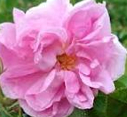 |
Rose Maroc – Rosa centifolia3% in Organic Jojoba oil. Method of extraction: Solvent Plant part: Flower A pale yellow liquid with a deep, sweet, rosy-floral, tenacious odour Important Note: The information provided is for educational purposes only.
|
|
 |
Rose Otto (hydrosol)
Rosa damascena. Miller - Bulgaria Rose helps soothe minor skin inflammations; it can also improve appearance and elasticity of mature skin. Suitable for all ages and Totally Organic this uplifting facial toner is refreshing skin types. Important Note: The information provided is for educational purposes only.
|
|
 |
Rosehip Oil - Rosa canina This oil is very moisturising, smoothes wrinkles and helps prevent the signs of aging. It can also be used to restore luster to hair. Certified Organic | Origin: Chile Rosehip oil is extracted by cold-pressing the seeds of the rosehip fruit. Cold-pressing ensures the colour and odour stays intact. Our Chillean rosehip oil is a clear, brilliant red liquid. Rosehip oil contains all the essential fatty acids, natural tretinoin (a derivative of retinol - vitamin A), carotene and vitamin C. It protects against dry skin and enhances skin tissue regeneration. The cells produce more collagen and elastin making skin smoother, firmer and supple. It is also used to treat burns, scars and eczema. Many women use rosehip oil to help reduce the appearance of stretch marks after childbirth. Important Note: The information provided is for educational purposes only.
|
|
 |
Rosemary Amiox Important Note: The information provided is for educational purposes only. |
|
 |
Rosemary Verbenone BP –Rosmarinus officinalis Method of extraction: steamed distilled A colourless or pale yellow mobile liquid with a strong, fresh, minty-herbaceous scent and a woody-balsamic undertone. Important Note: The information provided is for educational purposes only.
|
|
 |
Rosewood - Aniba rosaeodora Method of extraction: Steamed distilled A colourless to pale yellow liquid with a very sweet, woody-floral fragrance with a spicy hint. Important Note: The information provided is for educational purposes only.
|
|
 |
Red Clay - Australian deep red - Iron oxides Cosmetic grade, Suites all skin types, especially dry and mature skin. This clay is beautiful for mud mask to cleanse the skin, also works extremely well in shaving soap to cleanse skin and add slip for a smoothe shave. Important Note: The information provided is for educational purposes only.
|
|
 |
Sandalwood - Santalum spicatum Method of extraction: Steam Distilled A pale yellow, greenish or brownish viscous liquid with a deep, soft, sweet-woody balsamic scent of excellent tenacity Important Note: The information provided is for educational purposes only.
|
|
 |
Shea Nut Butter - Certified Organic Method of extraction:??? Shea nut butter is extracted from the nuts of the Karite tree in Ghana. After refinement is has a whitish colour and almost no odour. It is also a known anti-inflammatory agent and marketed as being effective at treating: scars, eczema, burns, rashes, acne, severely dry skin, dark spots, chapped lips, strechmarks, and wrinkles. Rich in cinnamic acid, it also provides light protection from UV rays. It can also be used as a moisturizing agent in soaps and shaving creams. Important Note: The information provided is for educational purposes only.
|
|
 |
Shea Nut Butter, Unrefined??? Certified Organic Method of extraction:??? Shea nut butter is extracted from the nuts of the Karite tree in West Africa. It has a yellow, buttery colour with a rich, nutty aroma. Shea nut butter forms a breathable, water-resistant film and can be used stand alone, for example on the lips, or included as a moisturising agent in a range of products - see above. Important Note: The information provided is for educational purposes only.
|
|
 |
Spikenard - Nardostachys jatamansi Method of extraction: Steamed distilled A pale yellow or amber liquid with a heavy, sweet-woody, spicy-animal odour Important Note: The information provided is for educational purposes only.
|
|
 |
Tamanu oil - Calophyllum inophllum -Organic Method of extraction: Cold Pressed Tamanu oil is cold pressed from the nut of the calophyllum inophyllum tree. A Polynesian fruit from the mangosteen family contains unique lipids with remarkable healing and beautifying properties, commonly used in first-aid. Important Note: The information provided is for educational purposes only.
|
|
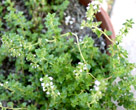 |
Thyme Lemon - Thymus serphyllum Method of extraction: Steam Distilled A red, brown or orange liquid with a warm, spicy-herbaceous, powerful odour Important Note: The information provided is for educational purposes only.
|
|
 |
Turmeric Important Note: The information provided is for educational purposes only. |
|
 |
Vanilla bean Extract - Vanilla planifolia Method of extraction: Steam Distilled Important Note: The information provided is for educational purposes only.
|
|
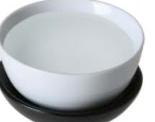 |
Vegetable Glycerine - Certified Organic Important Note: The information provided is for educational purposes only. |
|
 |
Vetiver - Vetiveria zizanoides Method of extraction: Steam Distilled A dark brown olive or amber viscous oil with a deep smoky, earthy-woody odour with a sweet persistent undertone, or very pale oil with a dry-woody odour. The colour and scent can vary according to the source. Important Note: The information provided is for educational purposes only.
|
|
 |
Vitamin e - Alpha Tocopherol pure is a light yellow oil/Clear thick liquid, a fat-soluble vitamin, that is actually a family of compounds, the tocopherols, found in nature. Alphatoxopherol is the most common and the most active of the seven currently described forms-alpha, beta, gamma, delta, epsilon, and zeta. Specifically, d-alpha tocopherol is the most potent form, more active than the synthetic dl-alpha tocopherol. The best sources of vitamin E are the vegetable and seed or nut oils. It was first isolated from wheat germ oil, which is still a commonly used, rich source of vitamin E. The primary function of vitamin E is as an antioxidant, which is very important, I believe, in our present-day society with widespread pollution, processed food diets, and chemical exposure. Vitamin E is protective because it helps reduce oxidation of lipid membranes and the unsaturated fatty acids and prevents the breakdown of other nutrients by oxygen. Uses: There is quite an extensive list of uses for this popular nutrient, most commonly in the middle-aged and older populations. And there are many positive effects. Some of these claims are backed by good research, and more investigation is being done on vitamin E by medical and nutritional scientists. The protection of cells and tissues,vitamin E is used both internally and externally to assist in the repair of skin lesions, ulcers, burns, abrasions, and dry skin and to heal and/or diminish the scars caused from injury or surgery. and so much more. Important Note: The information provided is for educational purposes only.
|
|
 |
Wheatgerm - Triticum vulgare Method of extraction: Cold Pressed Wheatgerm is light yellow or repish oil, with a very clear characteristic fresh but heavy odour and thick consistency. Anti-oxidant & regenerative properties make Wheat germ oil a wonderful ingredient to ap to bodycare and cosmetic products. High in vitamin- A,D,E, & B group-1,2,3,6 & F, fatty acids, proteins & minerals, reduces scars, stretch marks, relieves sun damaged skin, rejuvenates dry / mature skin. It has anti-inflammatory and anti-oxidant effects, which may be beneficial in cosmetics. Softens and smoothes the skin improving the complexion. Important Note: The information provided is for educational purposes only.
|
|
 |
Witch Hazel (Hamamelis viginiana) - Organic Method of extraction: contains 14% alcohol The bark and leaves this plant are astringent. Witch-hazel helps to shrink and contract blood vessels back to normal size. It is also good for treating acne as it reduces inflammation. Witch Hazel helps tighten up the skin and reduces the bagginess around the eyes. The anti-inflammatory properties of whitch hazel stop itchy bumps from forming up around your irritated hair follicles. Apply before or after shaving, it should have an impact on your itchy red skin. Important Note: The information provided is for educational purposes only.
|
|
 |
Ylang ylang Extra - Cananga odorata Method of extraction: Steam Distilled Ylang ylang extra is a pale yellow, oily liquid with an intensely sweet, soft, floral-balsamic, slightly spicy scent with a creamy rich top note. Important Note: The information provided is for educational purposes only.
|
|
|
Xanthan Gum Non-GMO cosmetic & food grade Powder- soluble in water. Xanthan Gum is manufactured using a natural (microbial) fermentation process which converts corn syrup, (a carbohydrate substrate) to Xanthan gum using the microorganism Xanthomonas campestris. The microbe (commonly found in green leaves such as cabbage) produces the xanthan gum as a protective coat which is then precipitated and grounded into a powder of various mesh sizes. Xanthan gum is widely used in the food industry to add viscosity and suspension, and to stabilise emolsions. It is also used for pharmaceutical, cosmetic and industrial applications. Important Note: The information provided is for educational purposes only.
|
||

